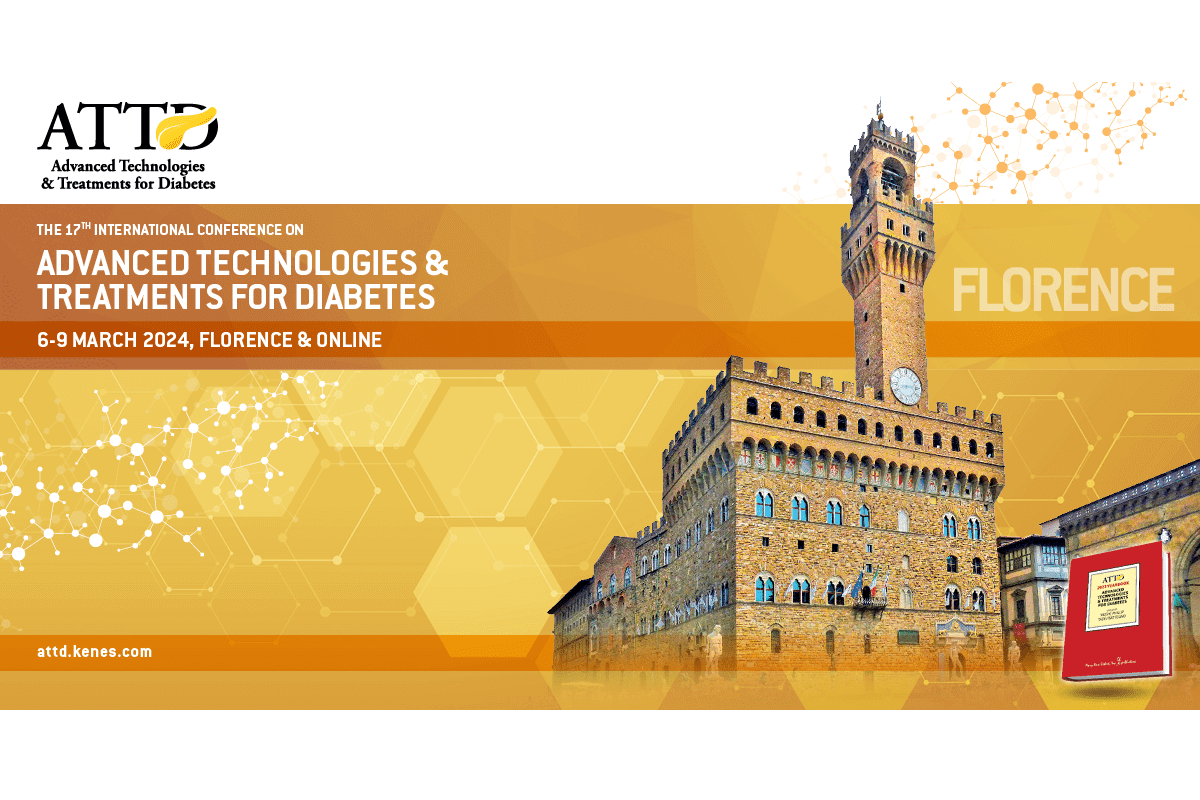
Leading researchers gathered in Florence, Italy, for the annual meeting of the Advanced Technologies & Treatments for Diabetes (ATTD), which took place from March 6 through 9. There were more than 5,000 attendees and featured more than 50 studies presented by Breakthrough T1D-funded researchers, funded now or in the past, working toward preventing, treating, and—one day—curing T1D and its complications.
Here are some of the highlights:
- Consensus Guidance—Pre-Stage 3 T1D: Why is guidance for monitoring people with presymptomatic (early stage) T1D important? As it turns out, there are a bunch of reasons. Chairing the Breakthrough T1D-sponsored session was Anastasia Albanese-O’Neill, Ph.D., APRN, CDCES, director of community screening and clinical trial education, who has been leading the international consensus monitoring guidance when it was announced at ATTD 2023.
Autoantibodies are antibodies against one’s own proteins. In T1D, there are three stages:
– Stage 1: 2+ autoantibodies, blood glucose is normal, no symptoms
– Stage 2: 2+ autoantibodies, blood glucose is abnormal, no symptoms
– Stage 3: 2+ autoantibodies, blood glucose is abnormal, clinical symptoms appear
Led by Breakthrough T1D, more than 70 clinicians have worked together to use an evidence-based approach to determine how often people of different ages and with different numbers of autoantibodies for type 1 should be monitored for changes in blood sugar and autoantibodies. Primary purpose #1: Implementing global screening for early detection of T1D. Primary purpose #2: Preventing diabetic ketoacidosis (DKA), a life-threatening complication due to a shortage of insulin, which a significant percentage of people experience at T1D diagnosis.
They are almost done with the manuscript, and it will be published in the next few months.
- In another, related story, a study showing an artificial intelligence (AI) platform could predict which and when individuals with stage 2 pre-T1D will progress to stage 3 T1D, and design a follow-up plan based on this risk prediction. Wow!
The authors of the paper include Ake Lernmark, D.Med., who received grants from us since 1983 and was a Breakthrough T1D Rumbough Award recipient, and Matthias von Herrath, M.D., who was awarded a postdoctoral fellowship in 1993 and received numerous grants since.
- Adjunctive Therapies: Viral Shah, M.D., presented on adjunct therapies, specifically GLP-1 stimulants, which have the potential to improve blood-sugar control in people with T1D. He highlighted the Breakthrough T1D-funded study, ADJUST-T1D, which is assessing once-weekly semaglutide (Ozempic® / Rybelsus®) in adults with inadequately controlled T1D and obesity using automated insulin delivery (AID), or artificial pancreas, systems. GLP-1 therapies are not approved for people with T1D, but we hope they will be eventually. Read more about our work in bringing these therapies to market.
- T1D Management: Osagie Ebekozien, M.D., of the T1D Exchange, gave an update on T1D management in the United States, presenting data demonstrating a move up in HbA1c outcomes, from 8.8 percent in 2016-2017 to 8.2 percent in 2022-2023. What’s more, HbA1c improvements were seen across all racial groups. This is the first update since 2019, when HbA1c outcomes were worse than they had been since 2010-2012 (7.8 percent in 2010-2012 versus 8.4 percent in 2016-2018). Still, the majority of people with T1D are not meeting their HbA1c targets. Perhaps more people will benefit from continuous glucose monitors (see below) and AID systems.
CGMs have gone from largely clinical use to much broader use among people with T1D. This is undoubtedly attributed to the JDRF-funded clinical trial, published in 2008, demonstrating that the use of a CGM helps people with T1D to avoid dangerous blood-sugar highs and lows.
A study by T1D Exchange found that approximately 78% of the 48,000 people in the study used CGMs. This includes individuals who use CGM (45%) and hybrid closed-loop technology (33%), which includes the use of CGM. In the study, the mean HbA1c in 2021–2022 was lower at 8.4%. This compared with the mean HbA1c in 2016–2017 of 8.7% (0.3% improvement; P < 0.01). Over the same period, the percentage of people with diabetes using a CGM, insulin pump, or hybrid closed-loop system increased (45%, 12%, and 33%, respectively).
- Replacement: In a Breakthrough T1D-sponsored session chaired and introduced by Esther Latres, Ph.D., Qizhi Tang, Ph.D., who is part of the Breakthrough T1D Center for Excellence in Northern California, presented on barriers to adoption of cell therapy (lack of renewable cell sources, poor engraftment, and immunosuppression) and the field’s status in addressing those barriers. She drew attention to her own efforts to engineer stem cells that can evade immune rejection and remain alive after transplantation, including using thyroid gland co-transplantation, provision of proteins that help the graft survive, and removing specific immune markers to make the beta cells resistant to rejection.